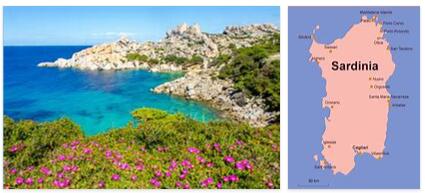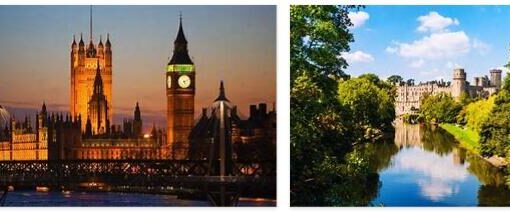Turin in Italy
Turin is one Big city in the north west of Italy and the capital of the Piedmont region and the province of Turin. In the Urban area More than 900,000 people live, who have settled in an area of 130 square kilometers.
Neighbors of Turin include the city Milan, France and Switzerland (all about 100 km away). The landscape of Turin lies on a plain bounded by the Alps and the Monferrato hills. The area of Turin is crossed by the Dora Riparia, the Stura di Lanzo and the Sangone. All of these rivers flow into the Po River.
There is a lot of football in Turin. This is where the home of AC Turin and the grande dame of international football Juventus Turin is located.
The history of Turin
The name of the city comes from the word tau. This means the mountains in the Celtic language. In Italian the city is called Torino, which roughly means “little bull” in German. That is why there is also a bull on the city coat of arms.
The first settlers were probably members of the Taurini tribe. They lived here in pre-Roman times. The Romans then finally came to this region and probably built around 28 BC. A military camp here.
The original urban design of the Romans still exists today. At that time the streets were built at right angles to each other. The streets continue in this way through Turin to this day. Already in Roman times around 5,000 people lived here, who protected themselves from attacks by high city walls.
After the end of the Roman Empire, the Lombards took over. They were in turn replaced by the Franks. The Dukes of Savoy came to power here in the last third of the 13th century.
The palaces that can still be admired today and magnificent gardens were established in the 15th century. This gave the city a new look. Turin had its own university as early as 1404.
In the Battle of Turin in 1706, the French besieged the city for 117 days – but without success. In 1861 the Kingdom of Italy was established and Turin became the capital. The then King Viktor Emanuell II lived in Turin. 14 castles from this splendid time still stand today!
Turin became an important traffic point when the Mont Cenis Tunnel was opened in 1871. Florence replaced Turin in the capital position, but Turin made up for this with a steep economic and industrial rise. The automotive industry in particular played a major role. Fiat was founded here in 1899 and Lancia followed in 1906.
In 1902 an international exhibition for modern decorative art took place here, which is regarded as the high point of Art Nouveau. In 1911, when over 430,000 people lived in Turin, a world exhibition was held there.
Like many other Italian cities, Turin suffered from the aftermath of the bombings of World War II. But after its end there was an unexpectedly rapid upswing in industry. This ensured that tens of thousands of workers moved to Turin every year to live and work there. As early as 1960 Turin exceeded the million mark in population, in 1975 the maximum was reached with 1.5 million residents. The industrial crisis hit Turin in the 1980s, and the population has since dropped to less than 1 million.
Sardinia (Italy)
Sardinia is an Italian island. It is located in the Mediterranean Sea and is loved by Vacationers and visited tourists. To Sicily, Sardinia is the second largest island in the Mediterranean. Many cultures have left their mark here. The Egyptians called the island Schardana, the Euboians called it Icchnouss and the Greeks named it Sandalyon. The name is not deceptive, it actually means sandal. Sardinia was given this name because its shape is reminiscent of a bare footprint.
Sardinia is not just an island but also forms the Sardinia region with offshore islands. 1.65 million people live in this region in an area of 24,090 square kilometers. The capital of Sardinia is called Cagliari.
Life and culture in Sardinia
Numerous dialects are spoken in the Sardinian region. Most of the people living there speak the Sardinian language with its various sub-dialects. These belong to the family of Romance languages. But mainly the Italian language used. Just like in the rest of the country.
Religion plays an important role in the life of the devout Sardinians. The majority of the population belong to the Roman Catholic Church.
In order to preserve the natural beauty of the region, the entire island has been declared a nature reserve. Here the numerous different animal species and plants are placed under protection. In Sardinia there are very rare representatives of flora and fauna.
A wide variety of amphibians live here. Among other things, the Sardinian mountain newt, the cave salamander, the common toad and the green toad are native here. They share the habitat with numerous reptile species. These are represented by the Greek tortoise and the broadband tortoise as well as the pond tortoise. The wall gecko feels particularly at home in the warm region. So it is not surprising that it settled and spread here. The ore sneak and the rare spotted roller sink have also found their home here. The horseshoe snake, the yellow-green angry snake and the common grass snake also live here.
The history of Sardinia
The first written evidence of the existence of Sardinia dates back to ancient times. However, archaeologists were able to secure various finds from much older cultures through targeted searches. It can be assumed that the island was settled much earlier. On the one hand it was not an island in prehistoric times and could be reached via the mainland, on the other hand the history of the surrounding regions speaks for it. Because people had already settled there in the Stone Age. Mycenaean ceramics were also found in Sardinia in 1979. One looked further and was able to reconstruct the contacts between Sardinia and Mycenae. In addition, one found evidence that in the Bronze Age a connection between Sardinia and the Aegean region must have existed. This was also shown by the goods that were typically traded at that time. Thus, in the region of Sardinia, various goods from the Mycenaean and Cypriot regions could be secured, which at that time could only have reached today’s island through trade.
Various historically significant buildings in Sardinia were also built under the architectural influence of various foreign cultures. Numerous buildings in Sardinia still show this impressively today.




